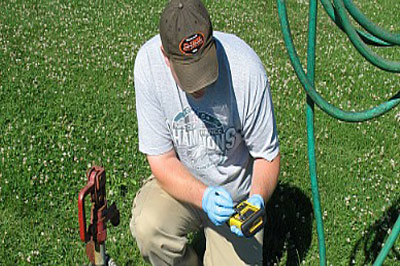Water testing before fracking: Does drilling contaminate water?
Friday, July 11, 2014

A study conducted by an associate professor of geology at The University of Cincinnati is tracking methane levels in drinking water near shale oil and gas drilling before, during and after fracking.
Inside Climate News reports that Amy Townsend-Small has chosen to focus on Carroll County’s water quality since the area has seen a lot of oil and gas activity. So far she has tested over 100 wells.
Townsend-Small is testing for methane in drinking water. One of two types can show up: biogenic methane or fossil fuel methane. Biogenic methane isn’t a result of natural gas drilling. Fossil fuel methane, on the other hand, is a component of fossil fuels like coal, oil and natural gas.
Methane can find it’s way into drinking water if a well is built poorly, though low levels aren’t enough to cause health concerns.
Although gas companies in Ohio are required to test for methane in water samples within 1,500 feet of where a gas well is to be constructed, the testing isn’t always completed. Results of Townsend-Small’s study will be released next year.
From Inside Climate News:
“Townsend-Small said some of the baseline samples in Ohio have shown surprisingly high concentrations of biogenic methane, even near levels that might allow people to light their tap water on fire.”
Related story: Study shows methane often in ground water prior to drilling
Via: Inside Climate News > In Rare Effort, Ohio Scientist to Test Water Before Fracking Soars




